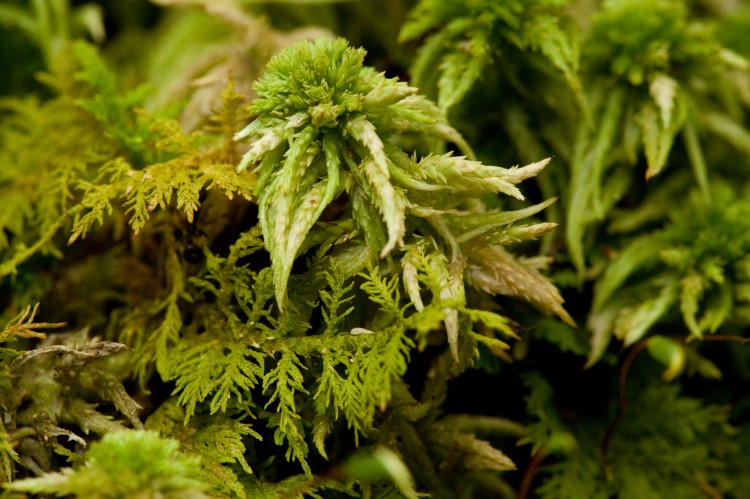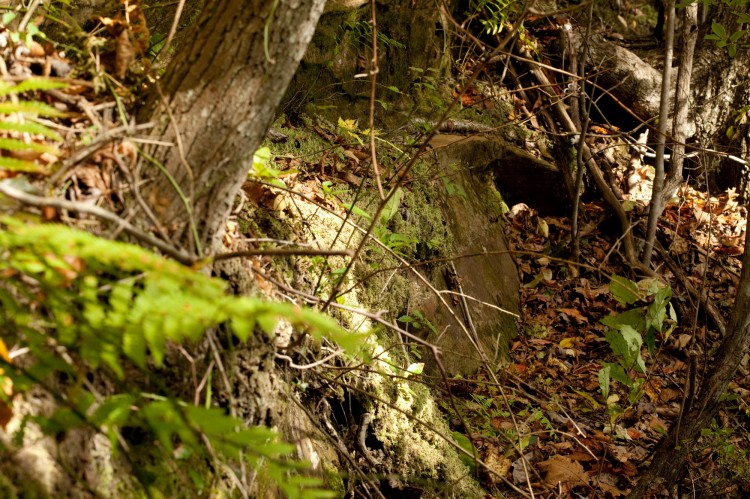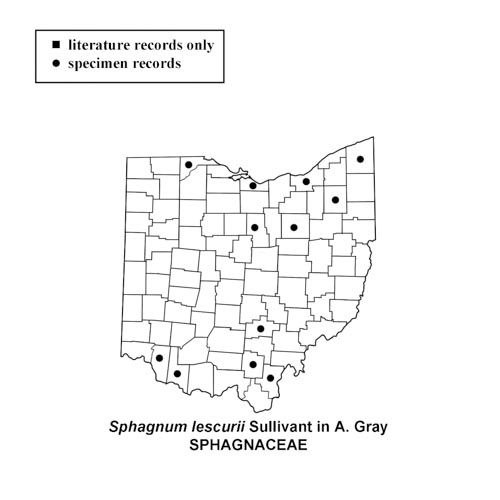Sphagnum lescurii

Sphagnum lescurii and Thuidium sp. on sandstone ledge in acidic woodland.
Jackson County, Ohio. October 2, 2009.

Sandstone ledge with Sphagnum lescurii in acidic woodland.
Jackson County, Ohio. October 2, 2009.
How to recognize Sphagnum lescurii: Sphagnum is recognizable as a genus because of its unique appearance. These mosses grow vertically, generally in a clump, carpet or hummock, with a round fuzzy pompon. This pompom or “capitulum” consists of a closely packed group of little beginning branches which will elongate as the stem grows upward. A group of branches will be clustered together in a single fascicle on the stem. A few of these branches will be divergent and will spread outwards from the stem, while others will be pendant and be very close to the stem. The stem and branch leaves usually differ in shape, but both grow with long thin chlorophyllose cells separating larger hyaline cells with pores, which allows for easy entry of water. A compound microscope and dissection of leaves and stem and branches of the plants are needed to make Sphagnum identifications accurately. This species is found in section Subsecundum of Sphagnum, which has row of tiny pores on the hyaline cells just adjacent to where these cells meet the green cells in the leaves on the convex back side of the branch leaves. Then details of the stem and stem leaves are used to determine the species of the moss. These features also vary depending on the habitat and moisture.
Where to find Sphagnum lescurii: This species is found in many different habitats from places intermittently wet and dry, open or shaded, in wetlands and on seepage rocks both acidic and basic.

